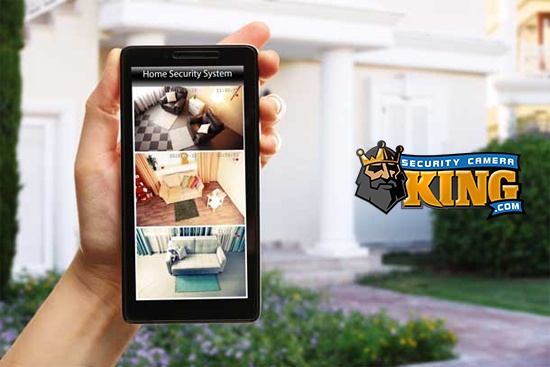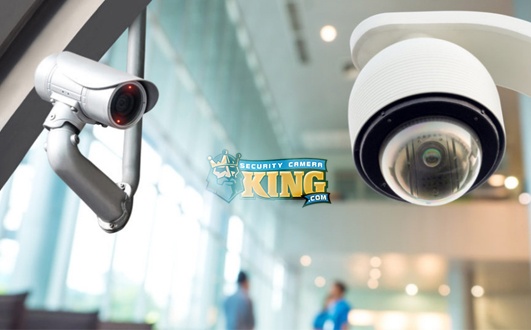An IP camera system is an innovative and effective video surveillance solution that has become increasingly popular all over the world. Security cameras of this kind are able to use the internet to transmit high-quality video feeds to anyone who is authorized, with an internet connection, and a device that can access the security cameras. This has revolutionized the security surveillance camera industry and successfully addresses the issues with analog CCTV security cameras of the past. With recent advancements in cellular technology including 3G and 4G broadband internet access, the outreach available to these cameras has drastically improved.
The following article will highlight the key functions and capabilities of IP security cameras and how they can benefit properties of all kinds. Security and safety is an important factor that all businesses and properties must take seriously to ensure assets and people are kept safe at an affordable cost. IP security cameras are able to provide effective security and safety for these properties. An IP security camera system can not only deter potential criminal activity but can also help law enforcement identify and prosecute any criminal attempt.
Understanding A Non-IP Camera System
In order to better understand how an IP camera system works and can benefit properties, it is first helpful to understand how non-IP security cameras work. This type of video surveillance system records video footage and then transmits that footage to a video storage unit known as a Digital Video Recorder or a DVR through a closed circuit. The closed circuit system is comprised of a cable, typically an RG-59 coaxial cable or a CAT5 ethernet cable. It is important to note that there are also wireless systems that fall under the category of a non-IP security camera system.
In a wireless non-IP security camera system, there is an antenna and a transmitter designed into the security camera itself. A receiver is placed near the DVR unit and is connected by the same coaxial cable as previously mentioned. Although the analog surveillance camera is transmitting the video signal wirelessly, it is still done on a private and specified frequency, thus classifying the system as a CCTV or Closed Circuit Television. The DVR unit also functions slightly differently in this type of system.
The DVR in a non-IP surveillance system uses a Hard Disk Drive or HDD similar to the one used in personal computers. This DVR is able to display video feeds in real-time using a single or multiple monitors. There are also miniature DVRs built into certain models of non-IP security cameras that allow them to store video surveillance footage directly on the camera itself by using a portable storage unit like an SD card similar to the ones found in some digital cameras.
Non-IP security cameras have certain limitations in that they require a closed circuit to operate on and require a readily available source of power. This prevents the convenience of scalability, which allows for the easy adoption of more security cameras in a property.
Understanding An IP Camera System
Digital data allows for innovative possibilities that an IP camera system utilizes to function. In conjunction with the internet, these cameras are able to provide new opportunities. There are two distinct types of IP security camera systems available to consumers. One such type is known as Internet Protocol or IP ready while the second type uses a DVR that utilizes its own unique web server technology and is also referred to as IP ready. Every IP camera has technology built inside that allows for the use of its own web server that can connect to the internet.
Unlike non-IP security surveillance cameras that send video footage as digital data directly to a DVR, IP cameras send the same information through the internet allowing a consumer to access the data or, in this case, the video footage from any internet connected device. An IP camera system sends the video footage data to a video recorder that is internet ready that is called a Network Video Recorder, or NVR. The IP camera system benefits properties by allowing users to implement numerous security surveillance cameras in multiple locations that can be managed by the NVR itself.
It is important to note that these locations are not limited to a single property but can span multiple locations that are far apart, such as in two different states. This provides incredible opportunities for networking and scalability. The second IP camera system type utilizes an IP ready device as the DVR to handle all internet related issues. The security surveillance camera in this type of system is not considered an IP ready device and instead sends all digital data to the DVR. The DVR in this system has the necessary web server technology that lets a user access the system.
The IP camera system in this type records all video footage in the camera itself using the DVRs HDD. A user is then able to remotely control the DVR and, in some models, the security cameras themselves. These systems are advantageous because they also allow users to monitor and control the security cameras using a smartphone and 3G or 4G technology. When these cameras detect unauthorized motion they can be set to send an alert to users, such as an email notification.
Advantages Of An IP Camera System
The biggest advantage and perhaps the first users will notice when using IP security cameras is the high-resolution images that they produce. Unlike the CCTV security cameras of the past, modern IP security surveillance cameras use a minimum image resolution of 640 x 480 pixels. This screen resolution can be increased to high definition or HD quality with a 30 frames per minute or FPS recording rate. IP security cameras are also extremely easy to use and can be repositioned anywhere the property requires so long as an IP network is available.
This allows large commercial and residential properties to take advantage of the scalability these security cameras provide. It also gives security personnel and other users the added ability to remotely view or access surveillance footage across multiple locations in real time. Moreover, IP security cameras can be powered using a single cable, enabling them to be easily moved as security needs change.













